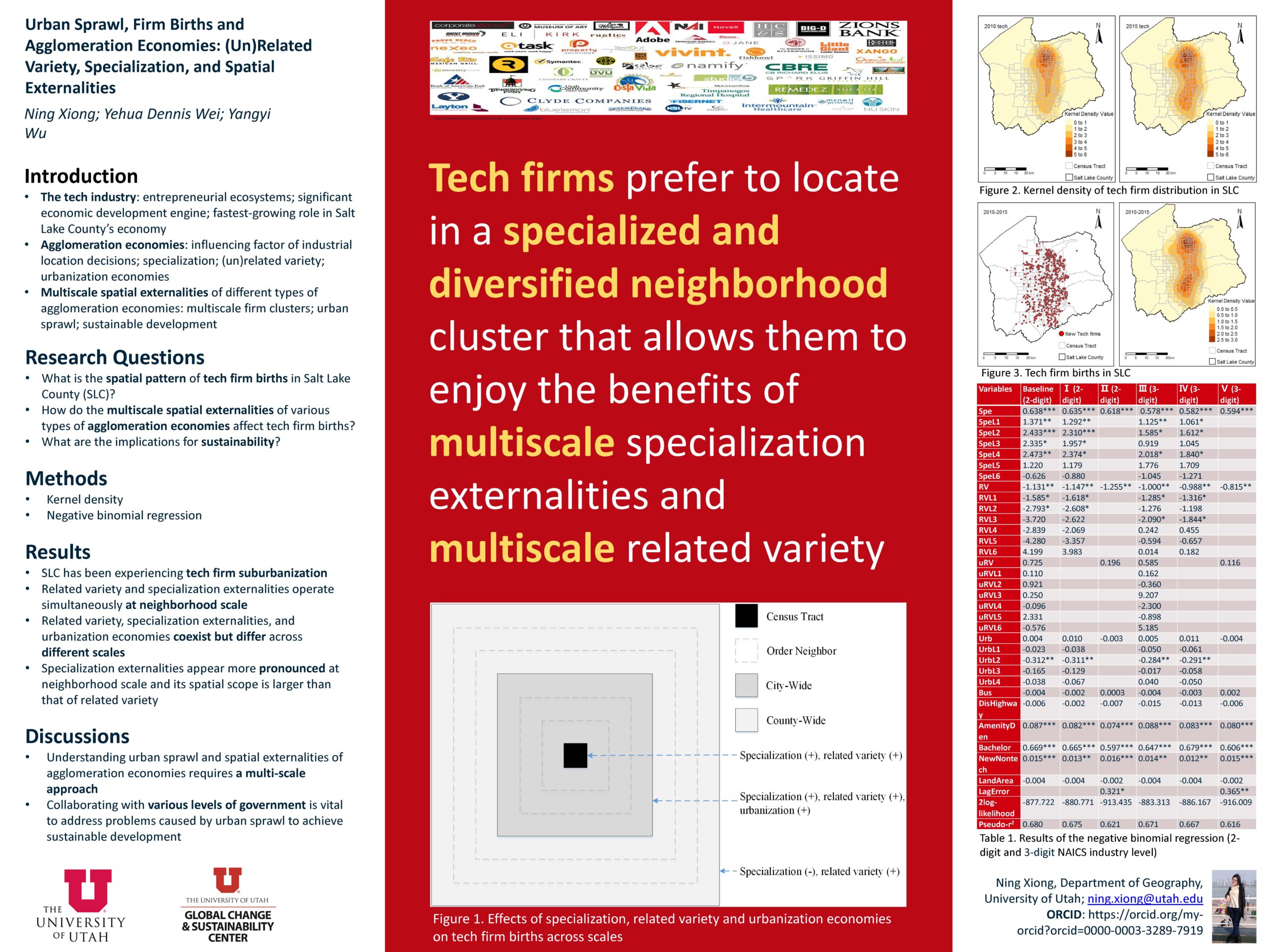Urban Sprawl, Tech Firm Births and Agglomeration Economies: (Un)Related Variety, Specialization, and Spatial Externalities
–Ning Xiong, Yehua Dennis Wei
[bs_collapse id=”collapse_bb86-afd7″]
[bs_citem title=”Bio” id=”citem_e610-6c22″ parent=”collapse_bb86-afd7″]
I am a Ph.D. student working with Yehua Dennis Wei in the Department of Geography at the University of Utah. My current research aims to examine the causes and mechanisms of spatial variation in intergenerational mobility (IM) and the IM gap between Whites and Blacks, with explicitly emphasizing the effects of race/ethnicity, built environment, environmental justice, health, and their interaction with socioeconomic factors. Geographic approaches are used extensively in my research. I am passionate about spatial inequality, environmental justice, and climate change research.
[/bs_citem]
[bs_citem title=”Abstract” id=”citem_eca8-96a7″ parent=”collapse_bb86-afd7″]
This paper examines the multi-scalar effects of different types of agglomeration economies, namely, specialization, related variety, unrelated variety, and urbanization economies, on tech firm births in Salt Lake County, Utah, US. We find tech firm suburbanization, and that these agglomeration economies affect tech firm births simultaneously, but their spatial externalities differ across various scales. Specialization and related variety operate at all scales including neighborhood scale while urbanization economies only work at city-wide scale. Unrelated variety does not affect tech firm births at all scales. Moreover, specialization externalities appear more pronounced at neighborhood scale and its spatial scope is larger than that of related variety. These findings partially explain the recent trend of multiscale clusters of the tech industry and suggest that spatial externalities of agglomeration economies should be understood at different types with a multi-scalar framework. This should be stressed by policymakers and urban planners to maintain sustainable development.
[/bs_citem]
[bs_citem title=”Narrative” id=”citem_780c-0f71″ parent=”collapse_bb86-afd7″]
Agglomeration economies are the benefits that firms obtain from being located near other firms and have been considered as an essential factor of industrial location decisions. Spatial externalities of agglomeration economies mean that firms within an area are affected by agglomeration economies outside the area. We use firm-level datasets within Salt Lake County covering 2010 and 2015 to address three research questions: What is the spatial pattern of tech firm births? How do the multiscale spatial externalities of these various types of agglomeration economies affect tech firm births? What are the implications for sustainability?
We find tech firm suburbanization, and that these agglomeration economies affect tech firm births simultaneously, but their spatial externalities differ across various scales. Specialization and related variety operate at all scales including neighborhood scale while urbanization economies only work at city-wide scale. Unrelated variety does not affect tech firm births at all scales. Moreover, specialization externalities appear more pronounced at neighborhood scale and its spatial scope is larger than that of related variety. These findings partially explain the recent trend of multiscale clusters of the tech industry and tech firm suburbanization, and suggest that spatial externalities of agglomeration economies should be understood at different types with a multi-scalar framework. This should be stressed by policymakers and urban planners to understand urban sprawl and achieve sustainable development.
[/bs_citem]
[/bs_collapse]

